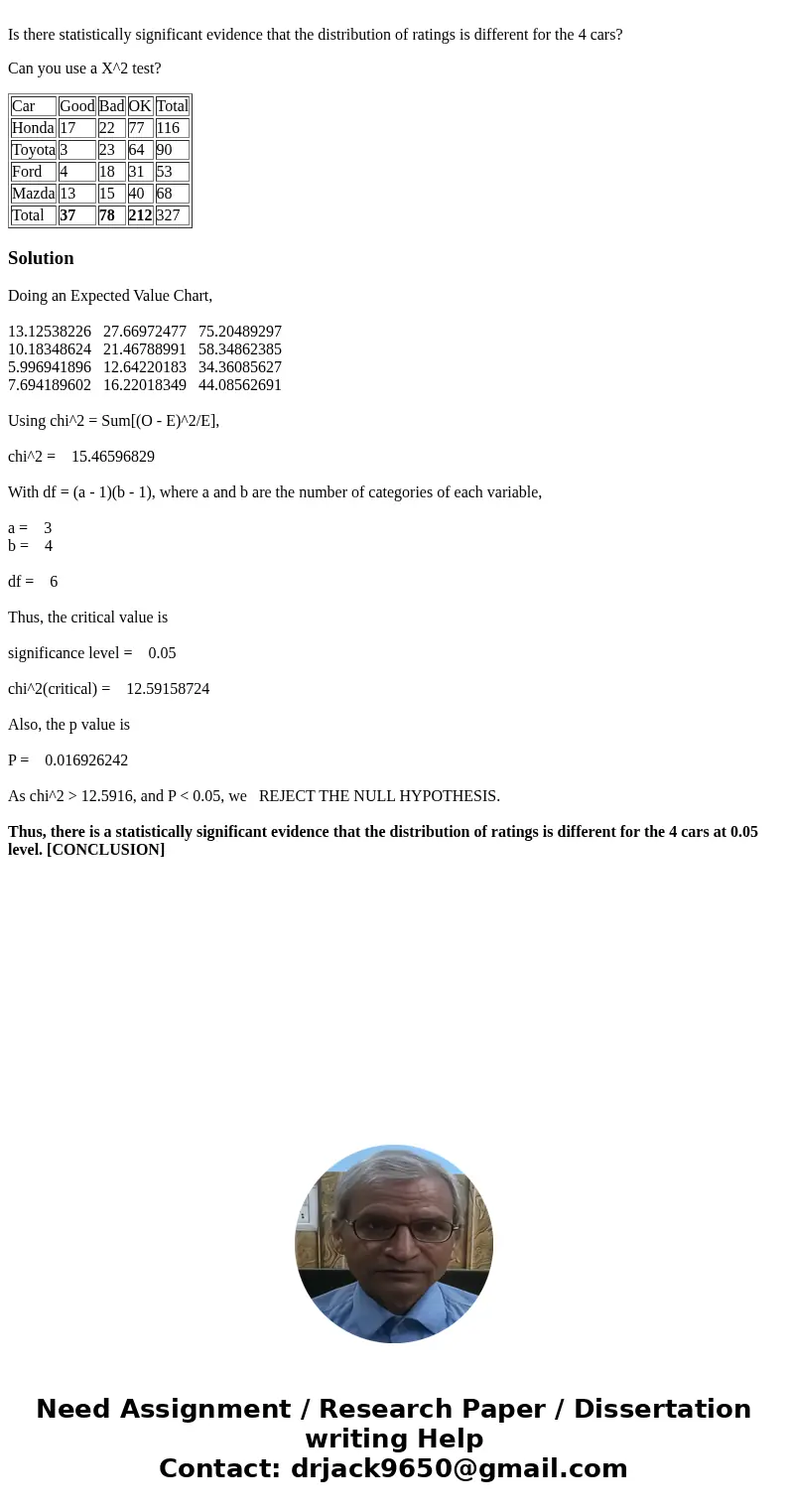Is there statistically significant evidence that the distrib
Is there statistically significant evidence that the distribution of ratings is different for the 4 cars?
Can you use a X^2 test?
| Car | Good | Bad | OK | Total |
| Honda | 17 | 22 | 77 | 116 |
| Toyota | 3 | 23 | 64 | 90 |
| Ford | 4 | 18 | 31 | 53 |
| Mazda | 13 | 15 | 40 | 68 |
| Total | 37 | 78 | 212 | 327 |
Solution
Doing an Expected Value Chart,
13.12538226 27.66972477 75.20489297
10.18348624 21.46788991 58.34862385
5.996941896 12.64220183 34.36085627
7.694189602 16.22018349 44.08562691
Using chi^2 = Sum[(O - E)^2/E],
chi^2 = 15.46596829
With df = (a - 1)(b - 1), where a and b are the number of categories of each variable,
a = 3
b = 4
df = 6
Thus, the critical value is
significance level = 0.05
chi^2(critical) = 12.59158724
Also, the p value is
P = 0.016926242
As chi^2 > 12.5916, and P < 0.05, we REJECT THE NULL HYPOTHESIS.
Thus, there is a statistically significant evidence that the distribution of ratings is different for the 4 cars at 0.05 level. [CONCLUSION]

 Homework Sourse
Homework Sourse